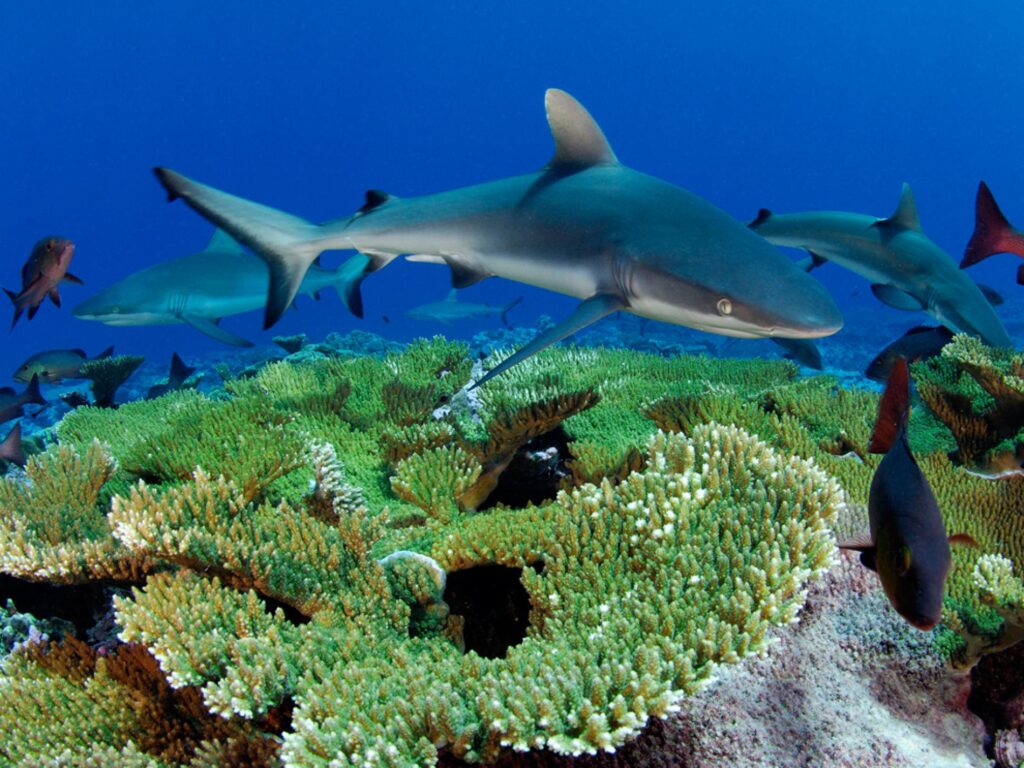Fuvahmulah is an island located in the Maldives, a tropical archipelago in the Indian Ocean. The island is known for its rich marine biodiversity and is often referred to as “the island of coral. The waters surrounding Fuvahmulah are home to a wide variety of marine life, including vibrant coral reefs, colorful fish, and other fascinating creatures. Diving and snorkeling are popular activities for visitors to explore and witness the beauty of the underwater world.
Marine Life
Sharks
Fuvahmulah is known for its healthy shark population, including species like blacktip reef sharks, whitetip reef sharks, tiger sharks, thresher sharks, hammerheads, silver tip shark, oceanic white tip shark, sand tooth tiger shark, silky shark, and whale sharks. These sharks can often be seen patrolling the reefs and are generally not aggressive towards humans.
Tiger Shark
- Tiger sharks can grow to impressive lengths. On average, adult tiger sharks measure
- between 10 to 14 feet (3 to 4.3 meters) in length. However, they have been known to reach sizes of up to 18 feet (5.5 meters) or more.
- Tiger sharks have a unique appearance, characterized by their dark gray to bluish-green coloration on the upper body, which fades to a lighter shade on the belly. They have vertical stripes or spots that resemble a tiger’s pattern, giving them their name. These markings help camouflage them in the water.
- Tiger sharks are highly adaptable and can thrive in a variety of habitats. They are commonly found in tropical and subtropical waters around the world, including coastal regions, coral reefs, and open ocean environments. They are known to migrate over long distances.
- Tiger sharks are ovoviviparous, which means their young develop inside eggs within the mother’s body. The embryos receive nourishment from a yolk sac until they are born live. Female tiger sharks typically give birth to a litter of 10 to 80 pups, depending on their size and age.
Thresher Shark
- The thresher shark is a unique and fascinating species known for its long, whip-like tail and distinctive hunting behavior. Thresher sharks are easily recognizable by their exceptionally long upper caudal (tail) fin, which can be as long as their body. They have a streamlined body shape with a large eye and a mouth that extends back behind their eyes. Thresher sharks vary in color, ranging from gray to brownish blue on the upper body and white on the underside.
- Thresher sharks are known for their incredible hunting technique, where they use their long tail to stun and herd their prey. They swim in large circles around schools of fish, using their tail to thrash the water and create shockwaves that disorient and stun their prey. Once the prey is immobilized, the thresher shark quickly swims in to feed.
- Thresher sharks can vary in size depending on the species. The common thresher shark (Alopias vulpinus) typically reaches lengths of 13-20 feet (4-6 meters), with the tail accounting for about half of their total length. The pelagic thresher shark (Alopias pelagicus) is slightly smaller, averaging around 10-15 feet (3-4.5 meters) in length.
- Thresher sharks are found in both tropical and temperate oceans around the world. They are pelagic (open ocean) creatures and can be found in deep offshore waters as well as nearshore areas. They are known to migrate long distances and are often encountered near seamounts, underwater canyons, and other areas with abundant prey.
Hammerhead Shark
- Hammerhead sharks are a group of sharks known for their distinctively shaped heads, which resemble a hammer or a T-shaped structure. Here are some facts about hammerhead sharks, including their behavior and average length.
- There are several species of hammerhead sharks, including the great hammerhead (Sphyrna mokarran), scalloped hammerhead (Sphyrna lewini), and smooth hammerhead (Sphyrna zygaena). The great hammerhead is the largest species and can reach lengths of up to 20 feet (6 meters).
- Hammerhead sharks are generally solitary creatures, although they can sometimes be seen in small schools or aggregations during certain times of the year. These aggregations often occur for purposes such as mating or feeding.
- Some species of hammerhead sharks undertake long-distance migrations, traveling thousands of miles each year. They may migrate to find food, reproduce, or avoid temperature extremes. These migrations often occur seasonally and can be influenced by factors such as water temperature and food availability.
Silver Tip Shark
- The silvertip shark or Carcharhinus albimarginatus, is a large predatory shark species found in tropical and subtropical waters. Silver tip sharks have a slender and streamlined body with a long, pointed snout. They get their name from the prominent silver-colored tips on their dorsal fins, pectoral fins, and caudal fin. The rest of their body is typically gray or bronze in color.
- Silver tip sharks are primarily found in the open ocean and around offshore islands, often inhabiting coral reefs, drop-offs, and deep-sea channels. They prefer warm waters and are commonly seen in the Indo-Pacific region, including the Red Sea, Indian Ocean, and the western Pacific Ocean. Silver tip sharks are solitary creatures and are usually encountered alone or in small groups. However, they may gather in larger numbers during certain activities such as feeding or mating.
- Silver tip sharks are considered a relatively large shark species. On average, they measure between 8 to 10 feet (2.4 to 3 meters) in length. However, larger individuals can reach lengths of up to 12 feet (3.6 meters).
Grey Reef Shark
- The gray reef shark, also known as Carcharhinus amblyrhynchos, is a species of shark commonly found in coral reef ecosystems throughout the Indo-Pacific region.
- Gray reef sharks have a slender and streamlined body with a long, pointed snout. They are typically gray or gray, brown in color, which helps them blend in with their reef habitat. They have a white or pale underside and a prominent dorsal fin.
- Gray reef sharks primarily inhabit coral reefs and adjacent areas, including lagoons and channels. They prefer clear, warm waters and can be found at depths ranging from shallow coastal reefs to deeper offshore areas.
- Adult gray reef sharks typically range in length from 5 to 7 feet (1.5 to 2.1 meters). Females tend to be slightly larger than males. It’s worth noting that individuals exceeding 8 feet (2.4 meters) have also been reported.
White Tip Reef Shark
- The white tip reef shark, also known as Triaenodon obesus, is a species of shark commonly found in coral reef environments in the tropical Indo-Pacific region. White tip reef sharks have a slender and cylindrical body with a short, rounded snout. They have distinctive white markings on the tips of their dorsal and caudal fins, which give them their name. The rest of their body is typically gray or brown in color.
- White tip reef sharks are primarily found in shallow coral reef areas, lagoons, and nearshore waters. They prefer warm waters and are known to rest or swim near the sandy bottoms or in caves and crevices during the day.
- White tip reef sharks are predominantly nocturnal, meaning they are most active during the night. They are known to rest in groups during the day, often found lying motionless on the seafloor or in caves. At night, they become more active, hunting for small fish, octopuses, crustaceans, and other prey.
- Adult white tip reef sharks typically measure around 4 to 6 feet (1.2 to 1.8 meters) in length. Females tend to be slightly larger than males. They are considered a smaller species of shark compared to some of their larger relatives.
Black Tip Reef Shark
- The blacktip reef shark, scientifically known as Carcharhinus melanopterus, is a species of shark commonly found in shallow tropical coral reef environments in the Indo-Pacific region. Blacktip reef sharks have a slim and streamlined body with a distinctive black or dark gray coloring on the tips of their dorsal fins, pectoral fins, and caudal fin. The rest of their body is typically light gray or gray-brown in color. They have a pointed snout and large, round eyes.
- Blacktip reef sharks inhabit coral reefs, lagoons, and coastal waters. They prefer areas with clear water and strong currents. They are commonly found in the Indo-Pacific region, including the Red Sea, Indian Ocean, and the western Pacific Ocean.
- Adult blacktip reef sharks typically measure around 4 to 6 feet (1.2 to 1.8 meters) in length. Females tend to be slightly larger than males. They are considered a mediumsized shark species compared to some other reef sharks.
Oceanic White Tip Shark
- The oceanic whitetip shark, scientifically known as Carcharhinus longimanus, is a large and powerful shark species found in open ocean habitats around the world.
- The oceanic whitetip shark has a robust and cylindrical body with a rounded snout. It gets its name from the white tips on its dorsal and pectoral fins. It typically has a uniform grayish-brown or bronze coloration on its body.
- Oceanic whitetip sharks are known for their bold and inquisitive behavior. They are opportunistic hunters and often scavenge on carcasses or feed on small fish, squid, and other marine animals. They are capable of long-distance movements, sometimes following migratory routes or tracking food sources.
- Oceanic whitetip sharks are one of the larger shark species, with adult females reaching an average length of 8 to 10 feet (2.4 to 3 meters). Males are slightly smaller, averaging around 6 to 8 feet (1.8 to 2.4 meters) in length. Exceptionally large individuals can exceed 12 feet (3.7 meters) in length.
Whale shark
- The whale shark, scientifically known as Rhincodon typus, is the largest fish species in the world. Despite its massive size, it is a gentle giant and is known for its docile behavior.
- Whale sharks have a distinctive appearance with a broad and flattened head, a wide mouth, and a body covered in a unique pattern of pale yellow or white spots and stripes. They have a grayish-brown or bluish-gray coloration on their backs.
- Whale sharks are known for their calm and non-threatening nature. They are generally slow swimmers, cruising through the water with a gentle and rhythmic movement. They are not known to be aggressive towards humans and are often curious, allowing swimmers and divers to observe them from a respectful distance.
- Whale sharks can grow to immense sizes. On average, they reach a length of 32 to 40 feet (9.8 to 12 meters). However, there have been reports of individuals exceeding 60 feet (18 meters) in length. The largest confirmed whale shark measured about 62 feet (18.8 meters).
Silky Shark
- The silky shark, scientifically known as Carcharhinus falciformis, is a species of shark found in warm tropical and subtropical waters around the world.
- Silky sharks have a slender and streamlined body with a long, rounded snout. They have a metallic gray or bronze coloration on their upper body and a lighter shade on their underside. Their skin feels smooth and silky to the touch, which is where their common name comes from.
- Silky sharks are primarily pelagic and can be found in both offshore and coastal waters. They inhabit tropical and subtropical areas of the Atlantic, Pacific, and Indian Oceans.
- They are known to frequent areas with warm water temperatures, often associated with oceanic islands and seamounts.
- Adult silky sharks can reach an average length of 6 to 10 feet (1.8 to 3 meters). Females are generally larger than males. Larger individuals have been reported, with some reaching lengths of up to 12 feet (3.7 meters).
Giant Oceanic Manta
- The giant oceanic manta ray, scientifically known as Mobula birostris, is a magnificent and graceful marine species.Giant oceanic manta rays are the largest species of rays.
- They have a distinctive diamond-shaped body with broad pectoral fins that can span up to 29 feet (8.8 meters) from tip to tip. They are typically black or dark brown on the upper side and have a white or pale underside.
- Giant oceanic manta rays inhabit warm and tropical waters around the world. They are often found in coastal areas, coral reefs, and open ocean habitats. They prefer areas with strong currents where they can feed on plankton-rich waters.
- Manta rays are known for their graceful and elegant swimming patterns. They have the ability to leap out of the water and perform acrobatic maneuvers. Unlike other species of rays, manta rays do not have a stinging tail and are harmless to humans.
- The giant oceanic manta ray has an average wingspan of around 18 to 23 feet (5.5 to 7 meters). The largest individuals can have a wingspan of up to 29 feet (8.8 meters). They can weigh several thousand pounds (up to 2,000 kilograms).
- Encountering giant oceanic manta rays is a remarkable experience. However, it is crucial to approach them with respect and caution. Maintaining a safe distance and following guidelines for responsible interactions can help protect these incredible creatures and their vulnerable habitats.
Spotted Eagle Ray
- The spotted eagle ray, scientifically known as Aetobatus narinari, is a fascinating species of ray found in tropical and subtropical waters around the world.
- Spotted eagle rays have a distinctive appearance with a flattened body and long, pointed pectoral fins that resemble wings. They have a dark brown or blackish upper body covered in white spots or rings, giving them their name. Their underside is usually white or pale yellow.
- Spotted eagle rays inhabit a variety of coastal and offshore habitats, including coral reefs, seagrass beds, and sandy bottoms. They are commonly found in warm tropical and subtropical waters of the Atlantic, Indian, and Pacific Oceans.
- The average wingspan of a spotted eagle ray ranges from 6 to 10 feet (1.8 to 3 meters), although larger individuals can reach up to 16 feet (4.9 meters) across. They have a long, whip-like tail that lacks any venomous spines, making them harmless to humans.
Sea Turtles
- Sea turtles are captivating marine reptiles that have been swimming the Earth’s oceans for millions of years. There are seven recognized species of sea turtles: green sea turtle, loggerhead sea turtle, hawksbill sea turtle, leatherback sea turtle, olive ridley sea turtle, Kemp’s ridley sea turtle, and flatback sea turtle. Each species has unique characteristics and habitat preferences.
- The Maldives is home to several species of sea turtles, including the Green turtle (Chelonia mydas), Hawksbill turtle (Eretmochelys imbricata), Olive Ridley turtle (Lepidochelys olivacea), and occasionally, the Loggerhead turtle (Caretta caretta) and Leatherback turtle (Dermochelys coriacea).
- Female sea turtles return to specific beaches to lay their eggs, a behavior known as nesting. The Maldives provides important nesting grounds for several sea turtle species. After laying eggs in the sand, the eggs incubate for several weeks, and hatchlings emerge and make their way to the sea, guided by natural cues such as the reflection of moonlight on the water.
- The average length of sea turtles can vary depending on the species. Green turtles can reach lengths of up to 4 feet (1.2 meters) and weigh around 300 to 500 pounds (136 to 227 kilograms). Hawksbill turtles are smaller, with an average length of 2 to 3 feet (0.6 to 0.9 meters) and weighing around 100 to 150 pounds (45 to 68 kilograms).
- Sea turtles are iconic and important species in the marine ecosystems of the Maldives. The conservation of sea turtles not only ensures the survival of these remarkable creatures but also contributes to the health and biodiversity of the surrounding marine environment.
Tuna
- In the Maldives, tuna is a significant and economically important fish species. Here are some specific facts about tuna, including their behavior, average length, and their significance in the Maldives.
- Tuna are highly migratory fish, known for their extensive travels across the oceans. They are fast swimmers and have a streamlined body built for speed. Tuna often travels in schools, which provides them protection and enables efficient feeding.
- The average length of tuna can vary depending on the species. Yellowfin tuna, one of the most sought-after species in the Maldives, can reach lengths of up to 6.5 feet (2 meters) and weigh around 300 pounds (136 kilograms). Skipjack tuna are typically smaller, averaging around 2 to 3 feet (0.6 to 0.9 meters) in length.
- The tuna industry in the Maldives is not only economically important but also holds cultural significance. Tuna fishing has been a traditional practice passed down through generations. By balancing sustainable fishing practices with conservation efforts, the
- Maldives aims to ensure the continued availability of tuna resources while safeguarding the marine environment.
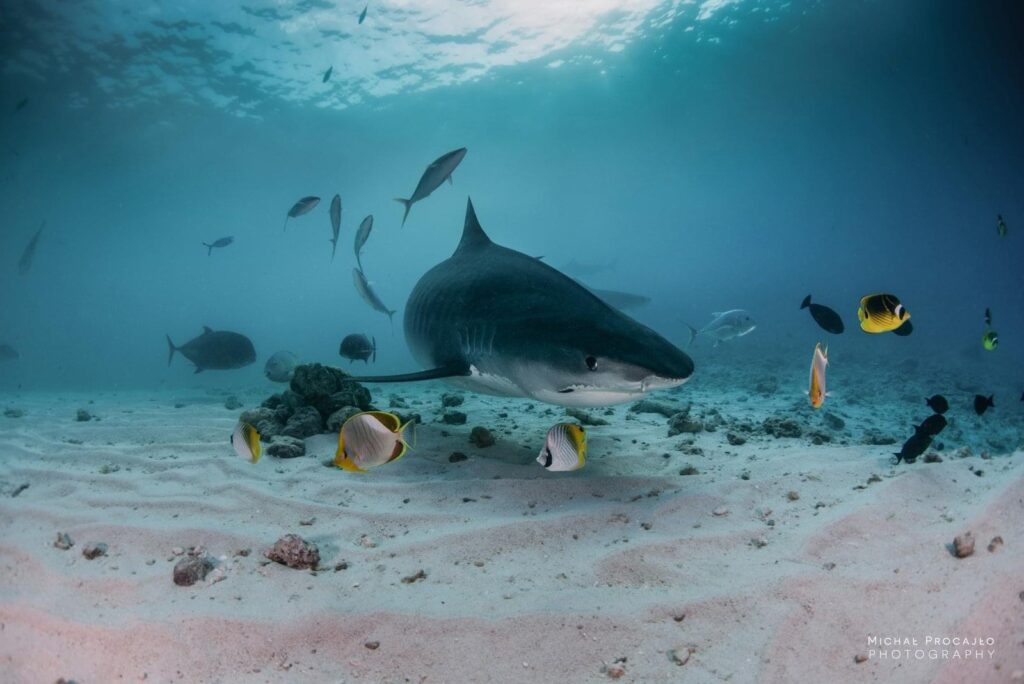
Tiger Shark
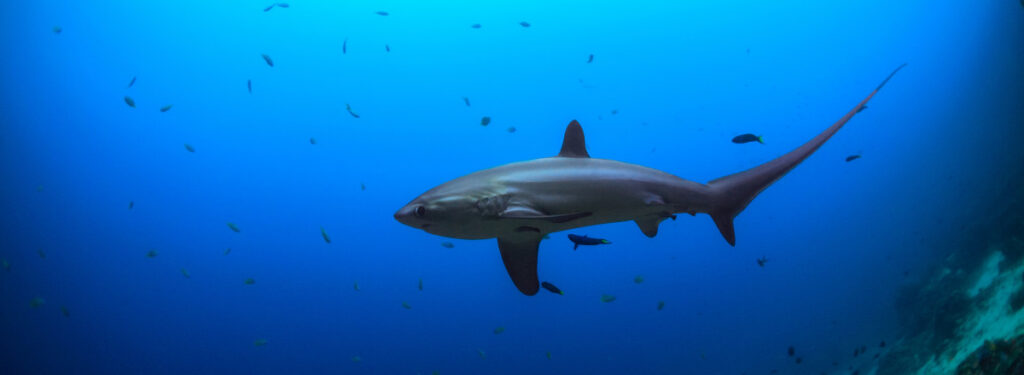
Thresher Shark
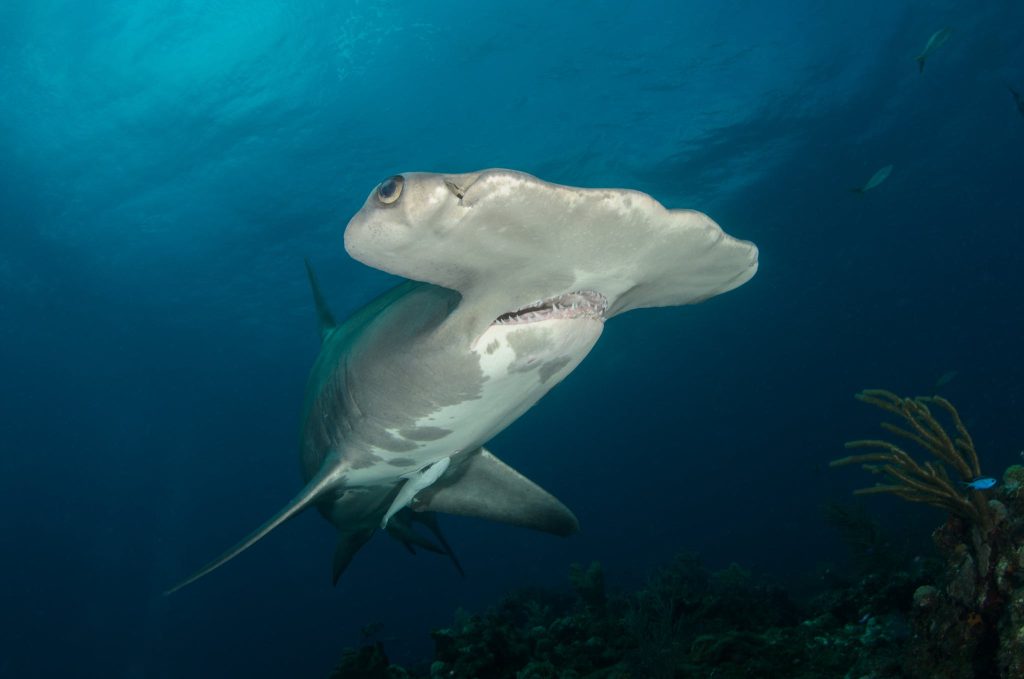
Hammerhead Shark
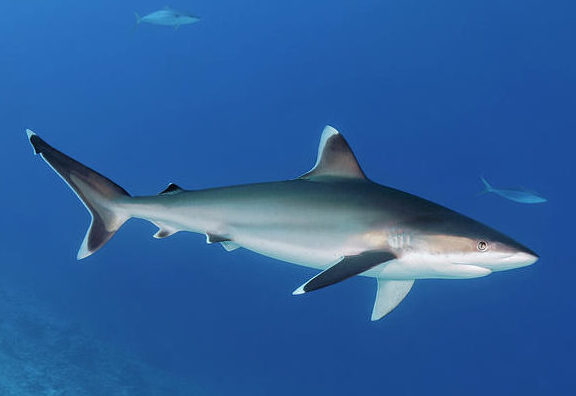
Silver Tip Shark
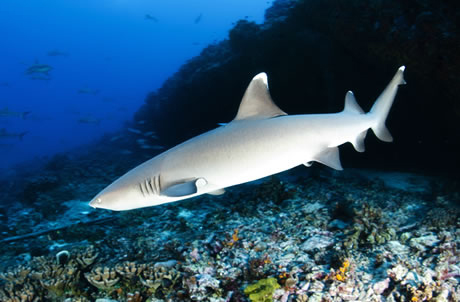
White Tip Reef Shark
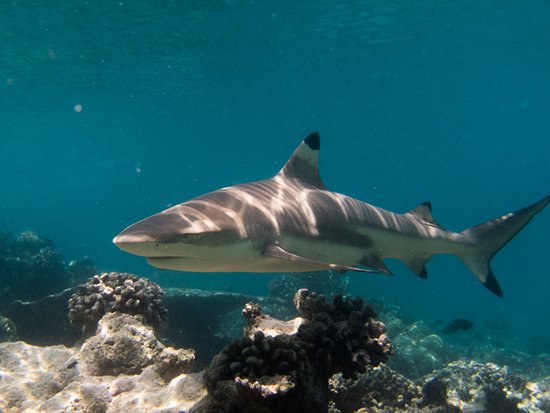
Black Tip Reef Shark

Oceanic White Tip Shark
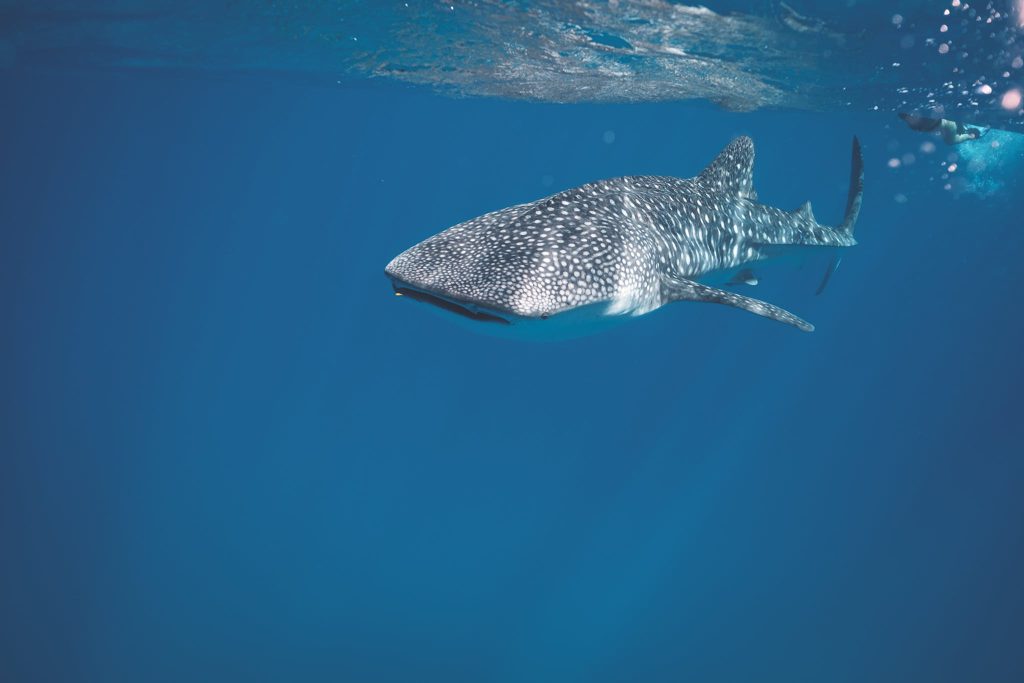
Whale Shark
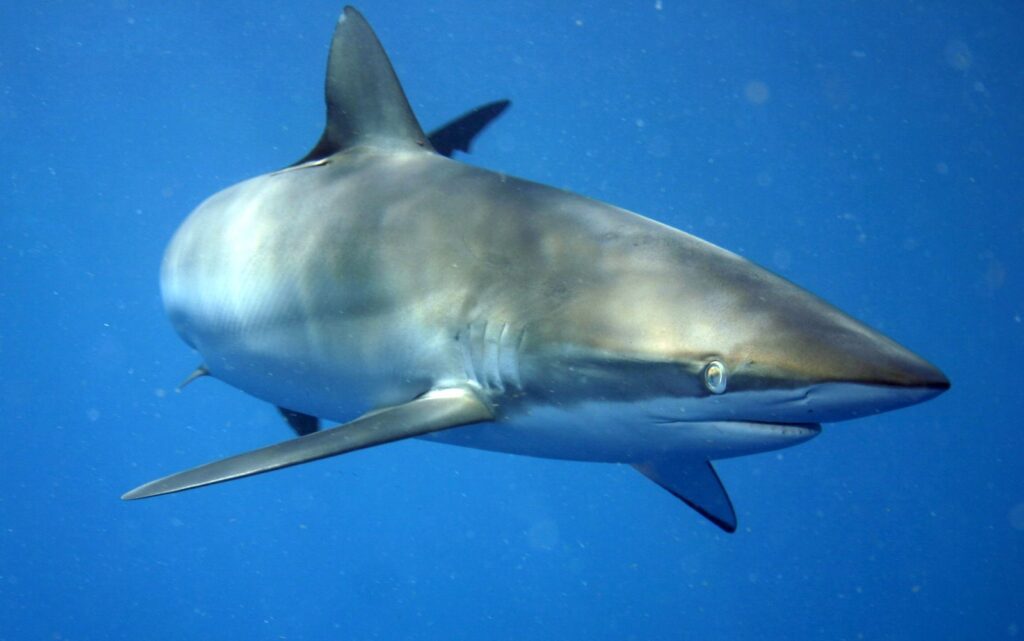
Silky Shark
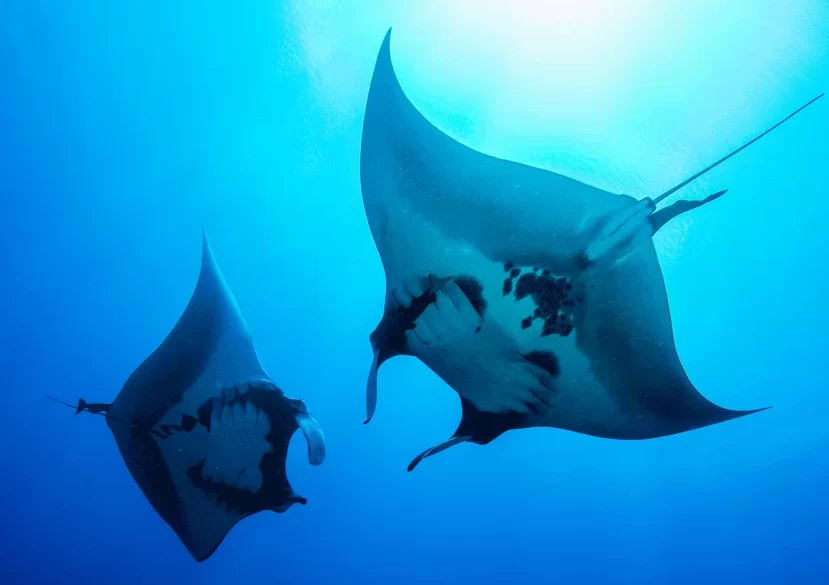
Giant Oceanic Manta
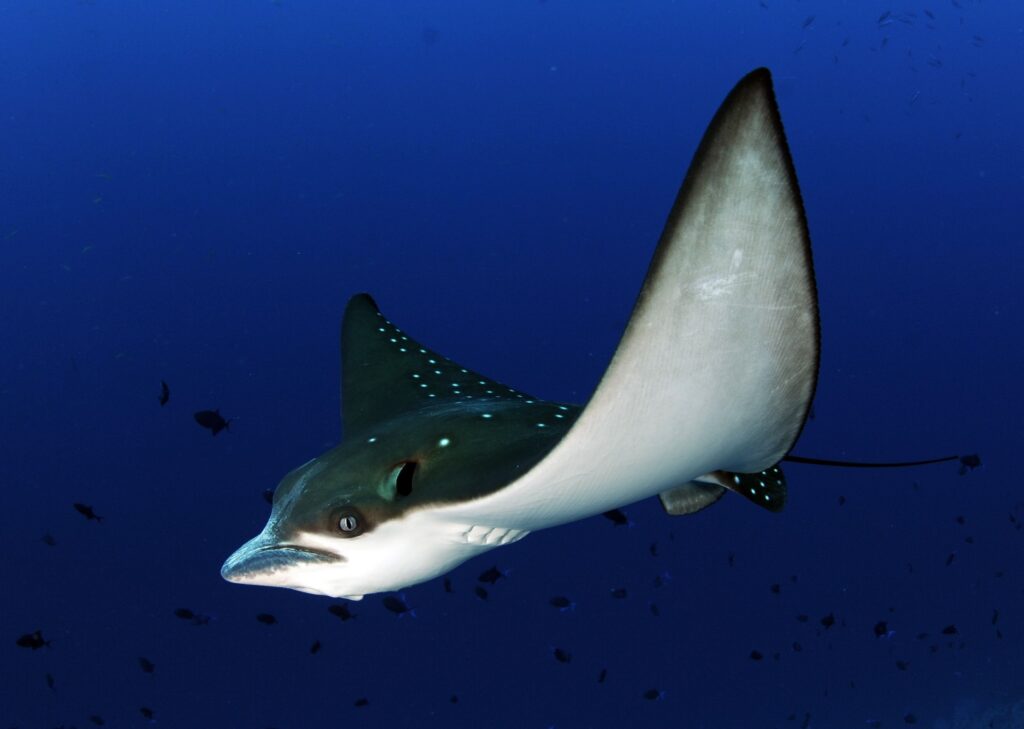
Spotted Eagle Ray
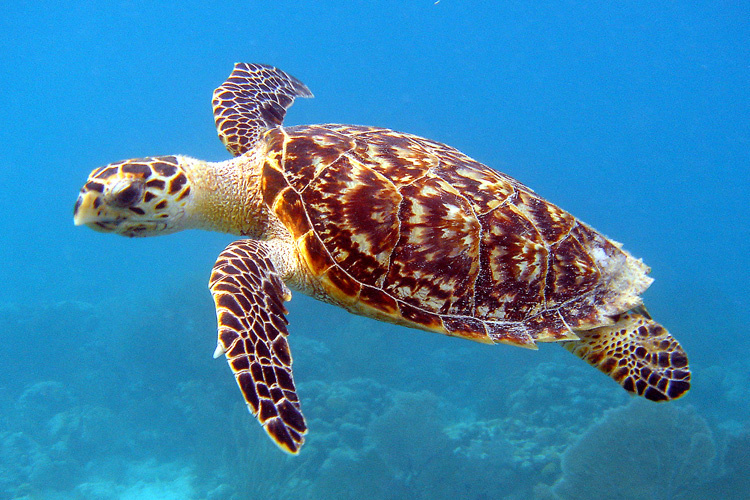
Hawksbill Turtle
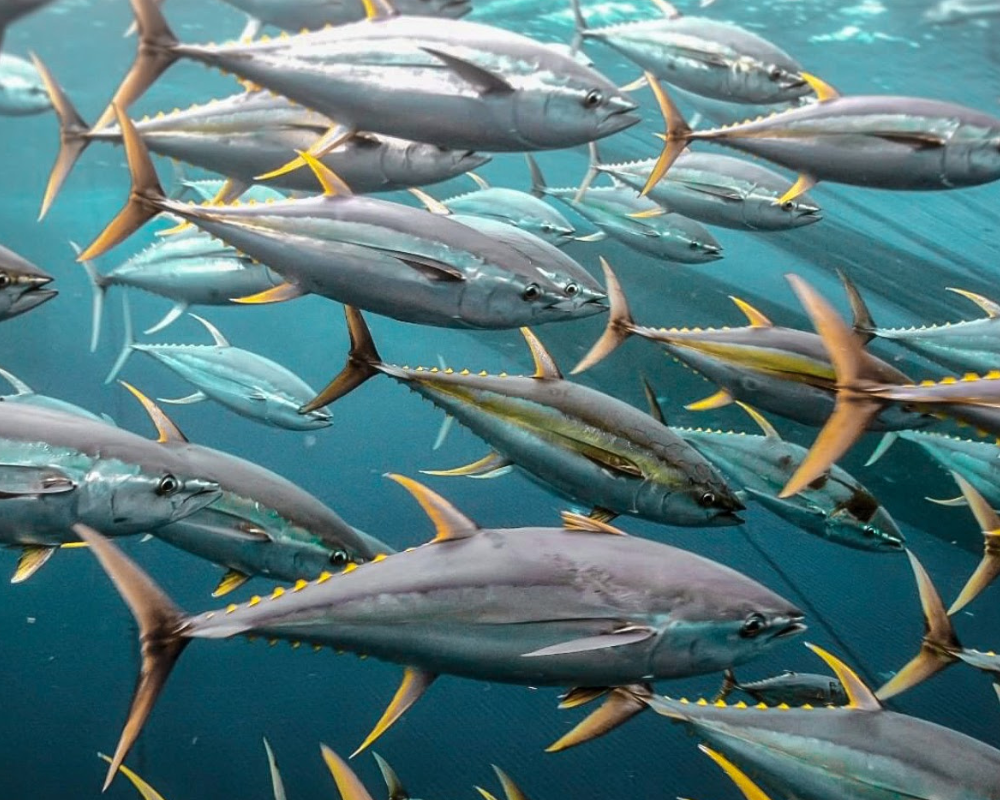
Yellow Fin Tuna

Smalltooth Sand Tiger Shark
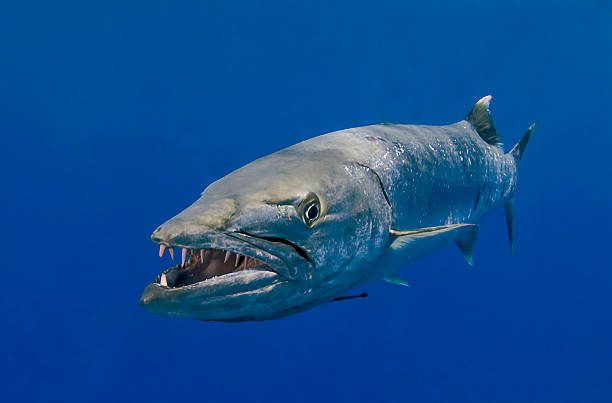
Giant Barracuda
